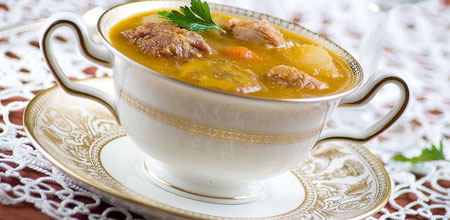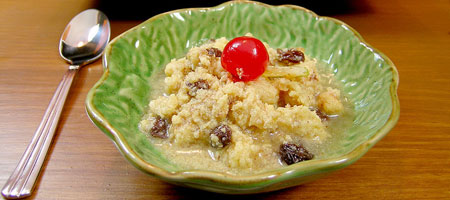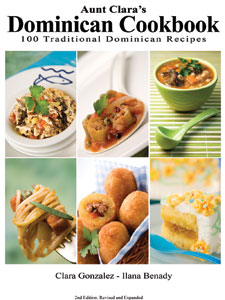Dominican cuisine is the result of crossroads of many continents and many countries. Before the Spaniards arrived on the island of Hispaniola
in 1492, the indigenous Tainos maintained a diet that reflected the resources found in their natural habitat, as well as their technological limitations. Fortunately, many of these dishes and ingredients have survived and today are a central part of the rich Dominican culinary culture.
With the arrival of the Spaniards, many new species of animals, vegetables, fruits and grains found their way to Hispaniola. The Spaniards also introduced many foods typical of the Mediterranean cuisine and others that had been passed down to the Spaniards by the Moors during their 700-year domination of the Iberian Peninsula.
The introduction of African slaves in 1503 presented yet another new (and important) gastronomic imprint on Hispaniola. It is worth noting that the African influence is almost as strong as the Spanish influence in the Dominican culture – and the cuisine is no exception.
Dominican fare is very similar to that found in other Latin American countries, especially Cuba and Puerto Rico – the only two other Spanish-speaking countries in the Caribbean. Some of the dishes are almost identical and only the names change.
Other countries and influences have found their way into our kitchens also. Pasta is a fundamental part of Dominican cooking; spaghetti was once called “the meat of the poor”. Exotic ingredients, like salted codfish and salted smoked herrings are commonly found in our kitchens. The base of Dominican cuisine is the sofrito, which is a mixture of spices and herbs, sautéed until the flavours are set free. A typical sofrito is made with thyme, salt, crushed garlic, parsley, onion (finely diced), green pepper, coriander/cilantro, tomatoes, tomato paste and vinegar. Many Dominican dishes are prepared using this mixture. Sometimes, to shorten the preparation time, people blend these ingredients and keep them in the fridge for a “ready- to-use” seasoning.
 Sancocho
Sancocho
La comida (lunch) is the most important meal in the Dominican Republic. The family will gather around the table to share La Bandera Dominicana (the Dominican flag), our typical lunch. This consists of a combination of rice, beans, meat (or seafood) and salad or a side dish, and when prepared correctly, it becomes a meal that includes all food groups. The fresh ingredients provide for a meal that is not only delicious but also healthy and nutritious. Accompany your lunch with a glass of ice water and end it with dessert, followed by a cup of coffee (un cafecito).
 Postre
Postre
 Dominican Cooking
Dominican Cooking
The CocinaDominicana.com and DominicanCooking.com websites contain a collection of typical Dominican recipes in Spanish and in English, the history and origins of Dominican cuisine, its ingredients and much more.
www.CocinaDominicana.com is the winner of the Arroba de Oro award 2007 in the Art and Culture category.
by Clara Gonzalez and Ilana Benady, authors of Aunt Clara’s Dominican Cookbook